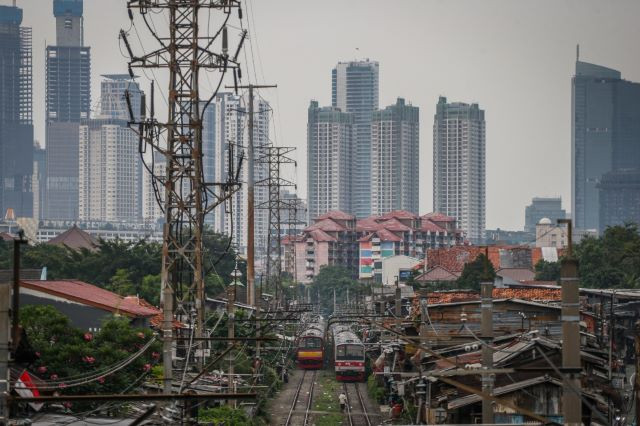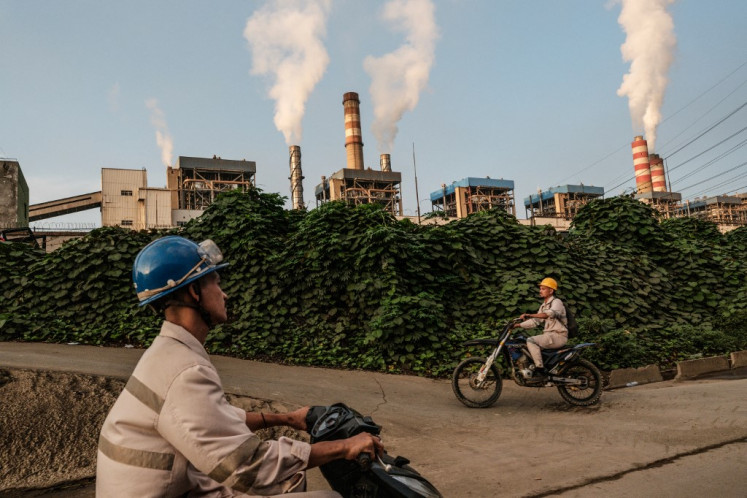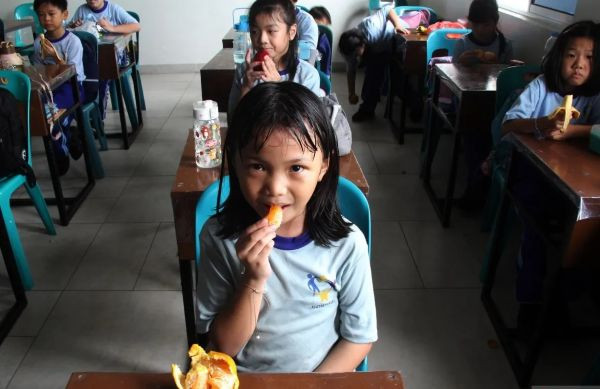Why the new stimulus isn’t enough to revive the economy
While this package is indeed justified to support short-term economic resilience, its design, heavily focused on demand-side relief with minimal impact on supply-side capacity or productivity, raises questions about whether this is the kind of policy we truly need.
Change text size
Gift Premium Articles
to Anyone
 Travelers board a train at Tasikmalaya Station, West Java, on April 5, 2023. (Antara/Adeng Bustomi)
Travelers board a train at Tasikmalaya Station, West Java, on April 5, 2023. (Antara/Adeng Bustomi)
T
he government has recently announced a new five-point stimulus package aimed at boosting purchasing power and driving household consumption amid sluggish economic conditions.
The measures include transport discounts (trains, flights and ferries), a 20 percent toll road discount during school holidays and extended food aid for 18.3 million low-income families. It also offers two months of wage subsidies for low-income workers and contract teachers, along with a six-month extension of a 50 percent discount on work accident insurance contributions for labor-intensive sectors.
While this package is indeed justified to support short-term economic resilience, its design, heavily focused on demand-side relief with minimal impact on supply-side capacity or productivity, raises questions about whether this is the kind of policy we truly need.
Rather than just focus on relief, the government should recalibrate its recent stimulus packages toward a dual-track policy approach: immediate support for the vulnerable, paired with reforms that enhance the economy’s productive capacity and lay foundations for long-term structural transformation.
Currently Indonesia’s economic fundamentals are weakening, marked by slowing growth, subdued consumer spending and rising layoffs. Despite the Ramadan and Idul Fitri holiday periods, GDP grew by only 4.87 percent year-on-year in the first quarter of 2025, down from 5.11 percent in the same period last year.
Annual household consumption, accounting for more than half of GDP, also slowed down from 4.91 percent in Q1 of 2024 to 4.89 percent in Q1 of 2025. Additionally, household credit growth decelerated to 9.49 percent in March 2025, compared to 10.35 percent in a year earlier.
Indonesia’s labor market is also under strain. Although the open unemployment rate slightly declined to 4.76 percent in February 2025 from 4.82 percent in the previous year, the number of unemployed individuals rose by 80 thousand to 7.82 million. The Indonesian Employers Association (Apindo) reported nearly 74,000 layoffs between January and March 2025, while the Manpower Ministry recorded over 26,000.


















